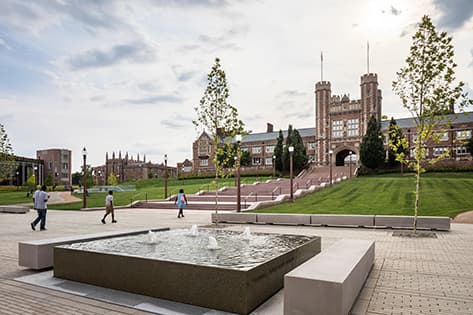Myosin makes the moves to keep cell processes humming along
Rohit Pappu at WashU and researchers at Duke University show how directed motions combined with protein interactions influence phase separation and the maintenance of biomolecular condensates

Biomolecular condensates are distinct molecular communities made of DNA, RNA and proteins that “condense” molecules to key locations inside cells. Intense efforts have focused on uncovering the numerous ways in which condensation is controlled, modulated and regulated inside cells.
In research published May 23 in Science Advances, biomedical scientists at Washington University in St. Louis and Duke University report new insights regarding the role of movements of molecules as drivers of condensation in cells.
”Protein condensation requires the crossing of protein-specific saturation concentrations. Molecules that move in directed ways can enable local supersaturation, allowing for directed motions to drive condensation,” said Rohit Pappu, Gene K. Beare Distinguished Professor of biomedical engineering the McKelvey School of Engineering at Washington University in St. Louis.
The plant hormone auxin drives growth in young plant cells through the activity of proteins known as transcription factors. Older cells “tell” auxin to be quiet by ensuring that these transcription factors partition away from the nucleus into the cytoplasm, where they are stored in condensates. This discovery, made in 2019 by the lab of Lucia Strader, professor of biology at Duke University School of Medicine, provided a condensate-centric mechanism for the long-standing observation regarding this partitioning of transcription factors. Now, the Pappu and Strader labs have uncovered how motility helps maintain the cytoplasmic condensates thus ensuring the ability to maintain the response to stress and also enabling the trafficking of molecules within and between plant cells.
The research, which has direct implications for how root systems manage responses to plant hormones, also has broader implications for understanding condensation of other motile proteins that move under the influence of myosin motors.
Myosins are ATP-dependent motor proteins associated with actin filaments that serve as the beams and girders for cell. The team found that actin-mediated movement of condensates enhances condensation, whereas disruption of actin weakened condensation.
“This work has given us new insight into regulation of condensation, drawing from multiple disciplines to build this model. Motility within the cell is not just about where molecules go, but also affects whether they form condensates. This motility-aided condensation may be widespread across cell types and kingdoms,” Strader said.
Going forward, the team aspires to work out how plants use different modes of condensation of auxin responsive factors in the context of root development. The work also has a direct bearing on the potential role of motility in influencing condensation in long cells such as axons, which might influence neurotransmission and neurodegeneration.
Chauhan G, Wilkinson EG, Yuan Y, Cohen SR, Onishi M, Pappu RV, Strader LC. Active transport enables protein condensation in cells. Sci Adv. (2025) DOI: https://doi.org/10.1126/sciadv.adv7875
This work was supported by the National Institutes of Health (R35 GM136338 to LCS), the US Air Force Office of Scientific Research (FA9550-20-1-0241 to RVP), and the National Science Foundation (MCB-1818383 and MCB-2337141 to MO). SRC was supported, in part, by training grant T32 EB028092 from the U.S. National Institutes of Health.




